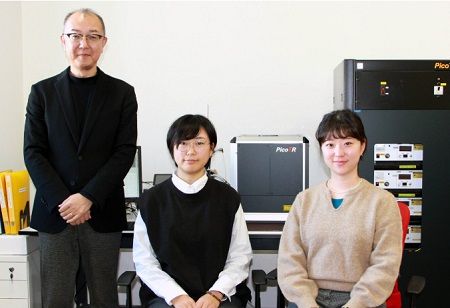Thermal switches, which electrically control heat transfer, are essential for the advancement of sophisticated thermal management systems. Historically, electrochemical thermal switches have been constrained by suboptimal performance, which impedes their extensive utilization in the electronics, energy, and waste heat recovery sectors.
A research team led by Professor Hiromichi Ohta of the Research Institute for Electronic Science, Hokkaido University employed a novel approach of using cerium oxide (CeO2) thin films as the active material in thermal switches, providing a highly efficient and sustainable alternative.
The research team showed that CeO2-based thermal switch performance can exceed prior benchmarks. “The novel device features an on/off thermal conductivity ratio of 5.8 and a thermal conductivity (κ)-switching width of 10.3 W/m·K, establishing a new benchmark for electrochemical thermal switches”, Ohta explains. “The thermal conductivity in its minimal state (off-state) is 2.2 W/m·K, but in the oxidized state (on-state), it significantly rises to 12.5 W/m·K. These performance metrics remain consistent after 100 cycles of reduction and oxidation, demonstrating remarkable durability and reliability for extended usage in practical applications”.
A notable benefit of this technology is the utilization of cerium oxide, a substance abundant in the earth, recognized for its economic viability and ecological sustainability. In contrast to conventional thermal switches that depend on scarce and costly materials, CeO2 offers a sustainable and readily available alternative, reducing expenses and the ecological footprint of thermal management solutions. This enhances the technology’s efficiency, scalability, and applicability across diverse industrial sectors.
The development of CeO2-based thermal switches represents a significant breakthrough in thermal management technology, offering broad applications across industries such as electronics cooling and renewable energy systems. These switches, utilized in thermal shutters and advanced displays, efficiently regulate infrared heat transfer, enhance waste heat recovery, and contribute to energy-efficient systems.
This study was supported by the Japan Society for the Promotion of Science (JSPS) Grants-in-Aid for Scientific Research A, and Innovative Areas (19H05791, 19H05788); the Hokkaido University DX Doctoral Fellowship; the Advanced Research Infrastructure for Materials and Nanotechnology, Japan and the Ministry of Education, Culture, Sports, Science, and Technology; and, the Crossover Alliance to Create the Future with People, Intelligence and Materials Network Joint Research Center for Materials and Devices.

